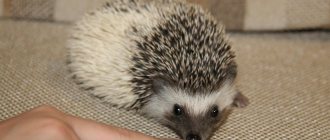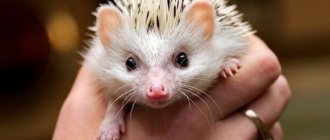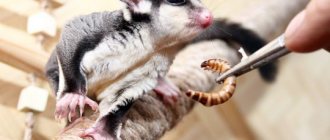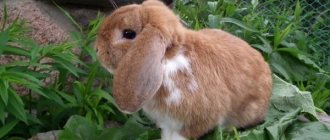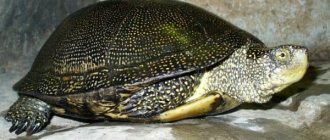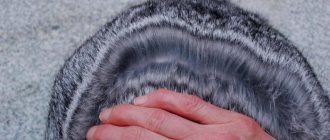What to feed a hedgehog: natural diet
You can feed your hedgehog:
- lean boiled or steamed meat (1 tbsp. beef, chicken breast or turkey). Any meat or poultry is given finely chopped or in the form of minced meat.
- chicken necks (1-2 pieces per serving) and other chicken by-products (stomachs, heart, liver).
- boiled or steamed fish (1 tablespoon no more than once a week).
Salt and spices should not be added to meat and fish.
African hedgehogs (as well as other species) eat crickets and zofobus with great pleasure. But since this food is very fatty, it is given no more than twice a week.
Mealworms, caterpillars, grasshoppers, marbled cockroaches, and locusts are also suitable as live food.
Vegetables include zucchini, carrots, green beans, asparagus, pumpkin, cucumbers, broccoli, spinach, and bell peppers. From fruits and berries - apples, pears, bananas, peaches, watermelon, cherries (pitted), strawberries, raspberries, blueberries, blueberries, kiwi.
In addition, a hedgehog’s diet is sometimes varied with a hard-boiled chicken egg, or better yet, a quail egg (you can also give it raw). The prickly pet will not refuse baby food either.
Of course, natural products at the heart of the diet are the most preferable option in feeding domestic hedgehogs. But if you decide to give your pet ready-made food, you need to approach their choice very responsibly.
How to care?
African pygmy hedgehogs are solitary. They don't need a family. Only one animal is placed in each cage. The cage should be spacious, 1 m3. It is installed in a warm place, away from the kitchen and away from drafts. The optimal temperature is 22-25 C. The floor in the cage should be level. The mesh doesn't fit.
It is recommended to cover the floor with an absorbent disposable diaper, but it is recommended to fix it. You can use paper bedding; choose Carefresh napkins.
An object is installed in the cage that will serve as a refuge for the hedgehog. Among the toys I install a running wheel, mazes, and a hammock. A drinking bowl, preferably a nipple one, and 2 bowls for soft and hard food are attached to the walls of the cage.
Dishes are washed every time after feeding. It is recommended to clean the cage daily. When keeping at home, it is recommended to follow some rules:
- African hedgehogs are fed insects and boiled meat; use chicken, beef, chicken hearts and liver; you can feed your pet fresh minced meat, wheat and oat porridge; hedgehogs are given vegetables, fruits and berries; Exotic fruits, canned food, sweets, and fast food are contraindicated for pets;
- hedgehogs are difficult to toilet train; they often relieve themselves while playing in the wheel; the toilet tray is installed under the wheel;
- Once a week, pets are provided with a container of sand for taking dry baths;
- Once every 3-4 months, animals are bathed using a soap solution; use baby bathing gel; the dirt is cleaned with a toothbrush and dried with a towel;
- pet hedgehogs need to have their claws trimmed; do this once a month, with special tweezers;
- the pet needs to move actively; for this purpose they give him a walk; for walks, voluminous enclosures or display cases are provided; often the animal is walked in the apartment; It is necessary to remove electrical wires and upholstered furniture from the room; you need to be prepared for the animal to mark its territory.
For normal growth and development, the pet is given vitamins and nutritional supplements. They are introduced into meat, vegetables, and porridge. For young hedgehogs, flour from dried insects and worms is added. Adults are given fish oil and vitamins for dogs “Fitocalcevit”.
Experts recommend visiting a veterinarian once every six months. The hedgehog is checked for lice, ear mites, and infectious diseases. They take blood for general analysis and feces for helminths.
For an African hedgehog at home, it is necessary to provide proper care and follow all maintenance rules.
The lifespan of a decorative hedgehog at home is 6 years. The period always depends on the conditions of detention and feeding. The animal must be tamed gradually.
He must get used to new conditions, smells, and voices. You need to talk to your pet, look closely at its behavior, and listen to the sounds that the hedgehog makes.
Dry food for feeding hedgehogs
Pet food manufacturers have developed special food for African hedgehogs, but it is quite difficult to find in pet stores. Therefore, most owners feed African hedgehogs food intended for cats. But not all cat food is suitable for hedgehogs. Important: hedgehogs should be fed with high-quality super-premium food, the fat content of which does not exceed 8-12%, and the main components are meat (beef, chicken, turkey, lamb). The feed should not contain soy, wheat, corn and other starch-containing products, as well as various dyes and substitutes. For hedgehogs, we can recommend foods such as Royal Canin, ProPlan, Acana. Cheap foods such as KitiKat, Whiskas, etc. You can't feed hedgehogs.
When choosing dry food for your pygmy hedgehog, it is very important to adhere to the ratio of proteins and fats. So, protein should be at least 30%, and fat, as already mentioned, no more than 10-15%, fiber at least 4%.
A serving of dry food is approximately 1 tablespoon. The total calorie content of a hedgehog's diet per day should be 30-50 calories (do not forget, hedgehogs are prone to overeating, and as a result, to obesity).
But in any case, when feeding a hedgehog, you cannot limit yourself to dry food alone - the diet must include products from the above list.
An adult African hedgehog is fed 1-2 times a day, growing individuals - 3 times.
What not to feed hedgehogs
It is important to know the foods that should be completely excluded when feeding prickly pets. This:
- milk and dairy products. Like other mammals, hedgehogs feed on milk only in infancy. Adult animals do not produce the enzyme responsible for the breakdown of milk sugar. As a result, unprocessed lactose causes digestive upset.
- fruits such as avocado (known cases of poisoning with this fruit), pineapple (can negatively affect the condition of the oral cavity), grapes (impairs digestion). Dried fruits should also not be given, as they may get stuck in the teeth or stick to the larynx. For the same reason, it is not recommended to give nuts and seeds.
- citrus fruits, garlic, onions.
- any products containing flavors, preservatives, dyes and other harmful additives.
Substances hazardous to hedgehogs
Tea tree and cedar oils, and everything that contains these substances (shampoos, creams, etc.) are extremely dangerous for hedgehogs. Even the smell of these substances can lead to the death of an animal.
What do hedgehogs eat in the wild?
Under natural conditions, hedgehogs are omnivores. The main part of the diet of prickly animals consists of various insects. On occasion, they eat snails, earthworms, newborn mice, small poisonous snakes, and destroy bird nests located on the ground.
Hedgehogs readily eat plant roots and seeds. They like many vegetables, mushrooms, berries and fruits. Gluttonous and tireless animals perform the work of the territory’s orderlies, so they do not hesitate to taste carrion.
Features of keeping African hedgehogs at home
In recent years, it has become especially popular to keep ornamental African hedgehogs that do not live in the wild at home. It is for this reason that they should not be released for free range. This breed of hedgehogs was obtained through the selection of several breeds, as a result of which the mammals turned out to be very hardy and at the same time adapted for life in an apartment or private house. Next, we will take a closer look at the description of such animals, learn everything about their life expectancy and maintenance, and also get acquainted with the features of caring for them and feeding rules.
Description
African pygmy hedgehogs were artificially bred specifically for human consumption. These hedgehogs look very cute, they are not at all dangerous , they weigh about 500 g and are about 20 cm in length. They differ from each other mainly in color. Their needles, unlike forest species, are softer, which is undoubtedly a big plus.
Pygmy hedgehogs are very friendly and quickly get used to living with a family. They do not hibernate, do not have an unpleasant pungent odor and do not disturb their owners at night, since their lifestyle is completely different from wild individuals of this species.
It is not necessary to keep the animals in pairs, since they feel great alone, the main thing is to surround the pet with care.
Let's take a closer look at their color varieties.
- Dwarf gray individuals have black eyes and nose; they may have dark spots on their belly and legs. The needles are soft, dark gray or brown, usually on the back and in the ear area they have a gradating color from gray to black.
- Brown individuals have lighter needles, dark eyes, may have a dim edging, and a chocolate-colored nose. The skin is pale pink with a grayish undertone.
- Chocolate-colored pygmy hedgehogs have bright brown needles, black eyes, and a soft brown nose. Such individuals look especially attractive and cute. This species sometimes has characteristic dark spots on its abdomen and paws.
- There is also a “champagne” variety; the color of the needles of such individuals is usually gray-brown or light beige, the nose is pink, and the eyes may have a ruby color.
- There are also cinnamon-colored hedgehogs that have milky beige needles.
- When choosing a pet, we recommend paying attention to the common “salt and pepper” color. Hedgehogs are almost black, but the color also includes less pigmented needles. The skin around the ears and on the back of such individuals is usually dark.
Often, pygmy hedgehogs are born albinos, that is, they have completely white spines, a soft pink nose and bright scarlet eyes. And there are also just white hedgehogs that are not albino; their spines are almost all discolored.
Of course, breeders of pygmy hedgehogs often experiment, resulting in original and even unique colors.
Breeding
Breeding African pygmy hedgehogs is a very important step. First, carefully weigh the pros and cons. You should have enough free time to care for your pregnant hedgehog and babies.
How to determine gender
To determine the sex, pick up the hedgehog in your arms so that its belly is visible. In women, the genitals are located near the anus. In males, they are located approximately 1 cm from the anus in newborns and 2-2.5 cm in adults.
Mating
In order for mating to be successful, it is necessary that the hedgehogs be of the same age category
Curls become sexually mature at 5.5-6 weeks. Animals should not have sibling crosses until at least the third generation, so children must be separated by sex in advance. Weakened and diseased curls cannot be knitted.
A young male cannot be mated with an adult female. Due to inexperience, he can cause aggression and, as a result, be bitten. You can knit at 5.5-6 weeks, not earlier.
The female can become pregnant up to 5.5 weeks. This cannot be allowed. She cannot give birth or refuse to feed her young. A female should not be allowed to mate for more than 11 weeks if she has never given birth. Fused pelvic bones can complicate childbirth and lead to the death of a hedgehog.
Mating lasts 6-7 days. Animals should no longer be kept together. If mating does not occur, plant the curls for a week and then connect again.
Males can be bred every 2 weeks. Female - no more than 2 times a year. Otherwise it will kill her curls.
Pregnancy
Pregnancy in hedgehogs lasts 34-36 days. In a couple of weeks, the female gains 10-50 g in weight, and on the 25th day it is already clear that the hedgehog is pregnant: it becomes rounder and also changes its behavior. She begins to take care of herself, her pace slows down.
How to care for newborn hedgehogs
It is better to touch the hair of a newborn only through a cloth
In the first days of the cubs' life, the female behaves very nervously. It must be placed in a separate cage and ensure proper rest. Otherwise, he may refuse to feed the offspring or even kill them.
It is better not to touch small curls - the female may refuse them if she smells a person. But sometimes situations arise when the child simply needs to be picked up. In this case, wash your hands thoroughly with plain water, put on clean clothes and try to get rid of odors. When you pick up the baby, you distract the female. The same should be done when you put it back.
For the first 2 weeks, hedgehogs eat only their mother's milk, so start bringing them more food. At the age of 2 months, hedgehogs cease to be completely dependent on their mother.
Lifespan
Before you get yourself a new “neighbor,” it is very important to find out everything about him, including how long pygmy hedgehogs live. Of course, in the wild, hedgehogs have to fight for their existence, get their own food and look for wintering places; at home, this is impossible, as a result of which the life expectancy of individuals, of course, increases.
With proper and regular care, African hedgehogs can live for quite a long time, varying from 5 to 7 years, but there are cases where such pets have lived for ten years.
The main thing in keeping it is to feed your pet properly and provide it with a comfortable place to live, as well as monitor its health, and contact a veterinarian if necessary.
Price
You can buy a prickly animal at a pet store or nursery. The price of a hedgehog depends on a number of factors, including the type of animal, age, and color. The most affordable common hedgehogs start from 3,000 rubles. Exotic African hedgehogs can cost 12-15 thousand rubles.
When purchasing, it is important to purchase a healthy pet with clear eyes, without sagging skin, spots, or bumps on the skin. The baby's nose should be dry, without crusts. A sign of a sick hedgehog is “staggering syndrome” when walking.
Individuals with a characteristic gait usually have several diseases. The tummy of a healthy pet is evenly covered with fur, without bald spots or tangles. The acquisition of a prickly friend will definitely bring bright colors to the usual home life of any person.
Conditions for keeping
It takes very little effort to make your pet African hedgehog's life comfortable. Let's look at the most important points in the content.
- For your pet you need to choose a spacious and comfortable cage. Often, owners do it themselves, but it is best to take a ready-made version that does not contain too sharp rods. The animal can get hurt from them. A terrarium is not suitable for keeping a hedgehog, just like a regular box. The floor of the cage must be covered with an even covering.
- special filler or paper granules as bedding in the cage As for sawdust, you should buy options that are not made from resinous and coniferous trees; they can be toxic to hedgehogs. Birch sawdust is considered the best. Sawdust is poured 1.5-2 cm onto the floor in the cage, as evenly as possible. Cleaning the cage, including changing the bedding, is usually done once every 7 days, more often if necessary, especially if a couple of individuals live in the cage.
- Although ornamental hedgehogs are domestic, they, like free-living individuals, should always have a place where they can hide. For these purposes, you can put a small house in the cage for the hedgehog’s privacy; in pet stores, experts recommend choosing the one that is sold for chinchillas, but such a house, in general, can be made independently.
- Dwarf hedgehogs are as active as domestic hamsters, so if the animal is not allowed to run freely around the apartment or house, it is best to put a running wheel in its cage, the diameter of which should be about 30 cm. The wheel is also useful for hedgehogs in terms of health: many pets are prone to obesity.
- Don’t forget about the toilet, which is an important attribute in the life of an African hedgehog. The toilet area should be cleaned daily.
- The drinking bowl installed in the cage must either be attached to the cage itself, or be very heavy so that the animal does not turn it over. It is recommended to change the water every day.
- toys for decorative hedgehogs.
- It is recommended to keep hedgehogs at a temperature of 20 to 25 degrees. Overheating of the room, as well as hypothermia, can lead to illness in the pet. Moreover, if the temperature is less than 15 degrees, even an ornamental hedgehog may hibernate, although this is not typical for it. It is also very important to avoid drafts in the place where the hedgehog lives and not to open the windows too often, especially when the weather is cool. Hedgehogs do not like the sun very much, so you should not place the cage too close to a window with direct sunlight.
Character and lifestyle
The domestic African hedgehog, regardless of what species it originally belongs to, adapts to the general home structure and routine in its lifestyle, but the pet’s character still directly corresponds to its species.
That is, for example, no matter how much food there is in the bowl, and no matter how stubbornly the night light is left on in the evenings, the white-bellied hedgehog will still go hunting after sunset. This must be taken into account, because even if such an animal is locked in a cage for the night, it will “fight” with the bars until the morning and will do this very noisily.
South Africans will never play with children; moreover, if the child’s attention is too intrusive, they can bite him. This species also does not tolerate noisy large families; in such apartments the hedgehog will look for somewhere to hide, refuse food and, in general, will not bring joy to its owners, but complete disappointment. But for a lonely person, this species is the best company; it sleeps constantly, is always in one place, loves to eat and does not make noise.
Keeping an African hedgehog of the Algerian variety is absolutely no different from keeping a cat, to which these animals are similar in character. Such a hedgehog, for example, may well choose its owner’s legs for its sleep or lie down next to it.
Moreover, for this species the change of night and day is not at all important; they very easily adapt to any lifestyle and diet, except for isolating themselves in cages.
Somalis are most similar in behavior and character to guinea pigs. But, like many hedgehogs, they do not like to be locked up. This species will not come to sleep on the next pillow, but it will not hunt at night either.
However, it will definitely go around all the “possessions” several times a day, snorting and stomping at the same time. Somalis are the only “Africans”. Who will stubbornly stock up food supplies in their “house”, so before feeding the pet, finding an empty bowl. You need to check where the previous portion of food migrated - to the stomach or to the “bedroom”.
The dwarf species has the most docile and simple character of all, it can sit in a cage during the day while all the people are at work, in principle, it will simply sleep through these hours.
However, in the evenings the hedgehog turns into a “companion” and must be “freed”, picked up, played with, scratched on the tummy with a brush, and so on. There is no point in forcing your pet into a cage; the hedgehog will return there on its own by morning, the main thing is that it has access to its “home.”
All species of these pets do not need a “family” of their own kind at all, but can live in pairs, if there is a spacious enclosure or open country conditions.
African females are always larger than males by 1-2 cm and heavier by 70-100 grams. Externally, the coloring of females is in no way inferior to the colors of males, and gender does not affect the character of the animal in any way.
Feeding rules
Today, it is customary to feed dwarf domestic hedgehogs with ready-made food, but specialized food for hedgehogs in small towns is very difficult to obtain, which is why many choose premium balanced cat food as food. The main thing is to avoid the presence of starch, various dyes and flavoring additives. When choosing food, it is best to consult a specialist in advance.
Let's learn in more detail about the possible diet of domestic hedgehogs and about acceptable foods that can be given to the animal.
Hedgehogs, in addition to ready-made food, can and should also be given other products.
- Boiled lean meat . Mainly turkey, chicken and beef. Before serving, it is recommended to cut the meat into small pieces.
- Raw or boiled chicken eggs, quail eggs are also possible. You should not give more than 1-2 eggs per week.
- Boiled fillet of sea or river fish . If you cook fish with bones, it should be thoroughly cleaned before serving.
- Vegetables . You can give fresh or boiled carrots, as well as asparagus, cucumbers and broccoli.
- Fruits and berries. It is best to give apples, pears, bananas and melons in small slices. Exotics should be avoided and fruits and berries that are unknown should not be given. For example, a hedgehog can be poisoned by citrus fruits, which are contraindicated for it. Fruits can be replaced with baby puree, but it should not contain starch-containing ingredients.
- Hedgehogs in the wild are real predators, but domestic ones sometimes don’t mind eating grasshoppers and worms, which can be purchased without any problems at a pet store.
We will also consider prohibited foods that can harm your pet’s health.
- Any dairy products . Contrary to popular belief that hedgehogs love milk, they practically cannot digest it, leading to various diseases. It is recommended to exclude any dairy and fermented milk products from the diet.
- Pineapples, avocados, oranges, tangerines and lemons, as well as any exotic fruits and berries such as lychee.
- Dried fruits, raisins, grapes, nuts and seeds. Such products can cause your pet hedgehog to suffocate.
- Sweets, including candies and chocolate. Hedgehogs, like many other animals, are susceptible to developing diabetes, which is why it is best to avoid such treats.
- Salt, spices, seasonings and all products containing them are strictly prohibited for ornamental hedgehogs, as well as for any wild ones. Onions, garlic and any fast food are also prohibited.
Caring for a pet hedgehog is not difficult. Care activities include choosing the right diet, bathing and controlling the appearance of parasites. Also, domestic hedgehogs can be trained, which will help to perfectly organize their leisure time.
African domestic hedgehogs can not only be washed, but also need to be done . Some animals are very fond of this procedure, especially if they are accustomed to it from childhood, but many have an extremely negative attitude towards it. Hedgehogs are washed no more than 2 times a month, and as rarely as possible in the cold season, since the needles take a very long time to dry, and at this time the animal can catch a cold. They bathe hedgehogs in a basin, pouring about five liters of water into it; the water temperature should not be more than 35 degrees. The needles can be cleaned with a special shampoo and a soft toothbrush.
How to choose a place for a cage
The African hedgehog is a nocturnal animal and its peak activity occurs at this time of day. To ensure that it does not interfere with your rest, you should find a place for the cage that will be located at a sufficient distance from the bedroom.
Before you bring a hedgehog into your home, you should decide in advance where his house will be located. The place must be comfortable, otherwise the animal may get sick and even die.
It is strictly not recommended to place the cage on a windowsill. Direct rays of the sun are harmful, as the hedgehog can get heatstroke. In the cold season, in the presence of drafts, colds occur if the windows are not airtight.
